-
 Liu
Hi there! Welcome to my shop. Let me know if you have any questions.
Liu
Hi there! Welcome to my shop. Let me know if you have any questions.
Your message has exceeded the limit.

Do Metal Fences Last Longer than Wood? Exploring Fence Longevity and Materials
2025-10-24 10:33:26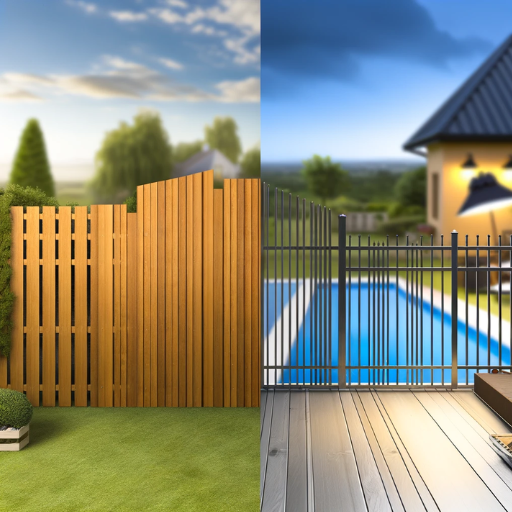
Durability is often an essential factor to consider when choosing the fence that will best suit your property. One significant comparison is between metal and wood in terms of longevity. The choice of material should include not only the design and price but also how effectively the fence will withstand time and natural elements. This article provides a thorough analysis of the advantages and disadvantages of both metal and wooden fences, emphasizing their lifespans, maintenance requirements, and overall durability. If you are debating between style and strength or looking at it from a long-term value perspective, this guide will provide you with the necessary know-how to make the right choice. Keep reading to find out which fencing material leads in durability. Find more info now.
Comparative Analysis of Metal and Wood Fences

Durability and Lifespan
Metal fences, especially ones made of aluminum and steel, are very durable. Their lifespan is supported by their resistance to rot, warping, and insect damage. This means they last for decades with almost no maintenance. On the other hand, wooden fences are simply not as durable, though treated wood can still withstand decay and pest infestations to a certain degree. Nonetheless, eventually the wood becomes unattractive due to weathering and needs regular upkeep, such as staining or sealing, to last longer.
Maintenance Requirements
Metal fences usually require little maintenance, aside from occasional cleaning or rust prevention (for wrought iron). In contrast, wooden fences require more frequent and substantial maintenance to look good and work well. This entails replacing broken boards, applying wood protector against moisture and pests, and painting or staining every few years.
Resilience to Environmental Factors
Metal fences do well in bad weather and are strong against wind, rain, and temperature changes. Wood fencing, on the other hand, though often stronger at the outset, is more susceptible to environmental factors such as moisture and heat, eventually leading to drying, warping, or rotting.
Overall Verdict
Metal fences are definitely the better choice if your concern is long-lasting, easy-to-maintain fencing. However, wooden fences may be a more suitable option if aesthetics, a natural look, or cost are the criteria, even though they have a shorter lifespan and require more upkeep.
Overview of Material Properties
It is essential to understand the characteristics of wood and metal when choosing fencing materials to make a good choice. Below is a comprehensive comparison of the attributes mentioned above:
1. Durability
Wood: In the long run, wood fences are going to take the toll of Mother Nature. If not properly cared for, wood will decay, be eaten by insects, and become misshapen. Cutting the wood down to size may help it last longer; this could mean 15–20 years if maintenance is consistently performed.
Metal: Durability is one of the main reasons people choose metal fences, especially when they are made of steel or aluminum. Rust will not affect aluminum. For steel, galvanization or powder coating makes it corrosion-resistant. With proper care, metal can last more than 50 years.
2. Maintenance Requirements
Wood: Daily, monthly, and yearly maintenance is necessary to keep it in good condition, which includes staining, sealing, or painting to prevent water and sun damage. Worn-out or decayed boards may also need to be replaced.
Metal: Requires very little maintenance; just clean it occasionally and check for scratches or dents. Coatings that prevent rust also reduce maintenance.
3. Aesthetic Appeal
Wood: A natural look is appealing and can be changed with stains and paints. There are various types of wood, such as cedar, redwood, and pine, each with its own character in terms of grain and hue.
Metal: The modern look is smooth and sleek. The classic wrought iron portrays elegance, while the minimalist aluminum or steel fencing complements contemporary buildings.
4. Cost
Wood: Wood fencing is usually cheaper in the beginning, with typical prices between $10 and $30 per linear foot, depending on the type of wood.
Metal: Metal fencing requires a higher upfront cost, with aluminum fencing averaging $20 to $40 per linear foot and wrought iron costing $30 to $70 per linear foot.
5. Environmental Impact
Wood: Good for the environment if taken from responsible logging. However, chemical treatments may harm the ecosystem.
Metal: Metal can be recycled and is often made from recycled materials; however, energy-intensive production processes might offset some of the environmental benefits.
Key Data Points
Lifespan: Wood (15–20 years), Metal (50+ years)
Maintenance Cost Over Lifetime: Wood ($800–$2,000+), Metal ($200–$500)
Weather Resistance: Metal surpasses wood due to corrosion- and rust-resistant coatings.
You are now in a position to choose the type of fence that best fits your functional needs, aesthetic preferences, and budget.
Longevity and Durability Factors
The longevity and durability of the fencing materials depend on several main factors. Here are five fundamental considerations that will help you to make your decision:
Material Strength:
Wood: It can easily be damaged by decay, termites, and adverse weather if it is not treated correctly.
Metal: Its solid structure and impact resistance make it ideal for high-traffic areas.
Weather Resistance:
Wood: It gets easily damaged by moisture and UV rays as it can warp, crack, and rot.
Metal: The coated ones have rust- and corrosion-resistant properties, which means less frequent upkeep in harsh climates.
Maintenance Requirements:
Wood: It requires regular staining, sealing, or painting to maintain its appearance and prevent structural compromise.
Metal: Very little maintenance is required, usually just cleaning the protective coatings or repainting them from time to time.
Pest Resistance:
Wood: It is susceptible to pest infestations, such as termites and ants, often requiring chemical treatments.
Metal: It is pest-proof and therefore does not require any treatments.
Projected Lifespan:
Wood: Normally at its best, it lasts for around 15–20 years if well taken care of, but might need to be replaced earlier if neglected.
Metal: It can last over 50 years, thus being a dependable and valuable long-term investment.
Advantages and Disadvantages
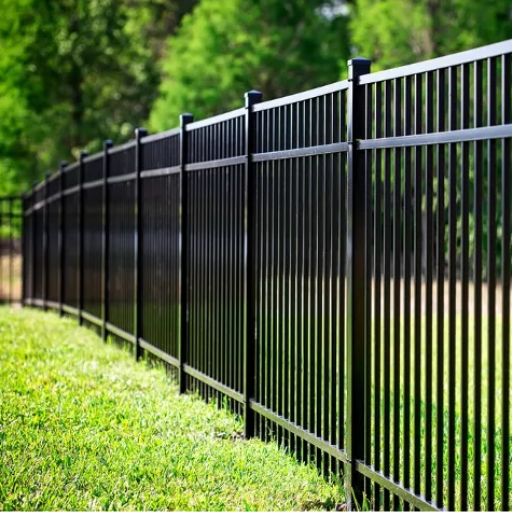
Advantages of Wood
Aesthetic Appeal: Wood has a primitive, cozy look that is perfectly compatible with traditional and rustic design styles. It is also possible to stain or paint wood to match certain architecturally beautiful styles.
Sustainability: Wood is a renewable resource when sourced from properly managed forests, making it an environmentally friendly choice.
Cost-Effective: Generally speaking, wood is cheaper at first compared to metal, both in terms of the price of material and labor cost.
Workability: It is simply a matter of cutting, shaping, and assembling to manufacture custom design or intricate craftsmanship, thus wood is very suitable.
Disadvantages of Wood
Maintenance Needs: Wooden buildings or structures must be regularly maintained, for example, by staining, sealing, or painting, to protect them from the elements and decay.
Shorter Lifespan: Improperly treated wood can easily get ruined; decaying faster if it has contact with moisture, even pests, and extreme temperatures.
Susceptibility to Pests: Timber is vulnerable to termite, beetle, and other insect infestations, which may require preventive chemical treatments.
Flammability: Wood's property of being able to burn naturally makes it so and even treated wood can still be a fire danger under some conditions.
Advantages of Metal
Durability: Metal is highly wear-resistant, making it ideal for projects that require long-term reliability.
Low Maintenance: Metal structures usually require only minimal maintenance, aside from occasional cleaning and/or surface treatments to prevent rust.
Resistance to Pests and Decay: Metal, unlike wood, attracts no insects and does not become rotten or warped due to environmental factors.
Strength: Metal provides ample structural support and can withstand severe weather, making it the ideal material for projects such as large buildings and bridges where durability is essential.
Longevity: Metal can last over 50 years with proper maintenance, which is considerably longer than wood.
Disadvantages of Metal
Higher Initial Cost: Metal still requires a lot of skilled labor to install, and hence, it can be more costly at the upfront stage.
Corrosion Risk: Generally, metal is durable, but if not treated, it can rust and corrode when exposed to moisture, particularly in coastal or humid climates.
Limited Aesthetic Options: Metal's appearance is usually more of an industrial on,e which may not correspond with some design tastes.
Thermal Conductivity: Metal heats up and cools down more quickly, making structures uncomfortable in extreme temperatures without proper insulation.
Data and Statistics
Projected Lifespan: Metal roofing systems, on average, can last 40-70 years, according to research, whereas asphalt shingles (15-20 years) and wooden roofs (20-30 years) have shorter life spans.
Pest Control: Tests indicate that untreated wood is entirely prone to termite damage, while treated wood experiences a decrease of approximately 50% in termite damage. On the other hand, metal is completely resistant and thus has no problem.
Maintenance Costs: Over 30 years, wood structures incur 25-30% more maintenance and repair expenses than metallic ones, primarily due to routine sealing, painting, or replacing damaged sections.
Unpacking these arguments, we find that wood and metal are indispensable materials depending on the type of construction and financial means. Knowing their pros and cons will help you make the right choice for the long run.
Pros and Cons of Metal Fences
Key Point | Pros | Cons |
|---|---|---|
Durability | Long-lasting, withstands harsh weather | Susceptible to rust without maintenance |
Maintenance | Low maintenance, easy cleaning | Requires occasional rust prevention |
Security | High security, strong material | Limited privacy in open designs |
Aesthetic Appeal | Customizable, elegant designs available | May appear industrial for some preferences |
Cost | Cost-effective long-term investment | High initial installation cost |
Fire Resistance | Non-combustible, fire-resistant | Not applicable |
Environmental Impact | Recyclable, durable, and less frequent replacement | High energy use in production |
Installation | Professional installation ensures durability | Complex, requires expertise |
Privacy | Can add slats for privacy | Open designs offer limited privacy |
Pros and Cons of Wood Fences
Key Point | Pros | Cons |
|---|---|---|
Aesthetic Appeal | Natural beauty, customizable designs | Requires regular staining or painting |
Versatility | Fits various styles and terrains | May warp or crack in extreme weather |
Cost | Affordable upfront cost | Higher long-term maintenance costs |
Privacy | Excellent privacy with solid panels | Shrinks over time, creating gaps |
Eco-Friendliness | Renewable, sustainable material | Vulnerable to pests like termites |
Durability | Can last years with proper care | Shorter lifespan than vinyl or metal |
Maintenance | Easy to repair damaged sections | Requires frequent upkeep to prevent decay |
Weather Sensitivity | Handles moderate climates well | Susceptible to rot in humid conditions |
Security | Provides good security with proper height | Less durable against heavy impacts |
Environmental and Maintenance Considerations
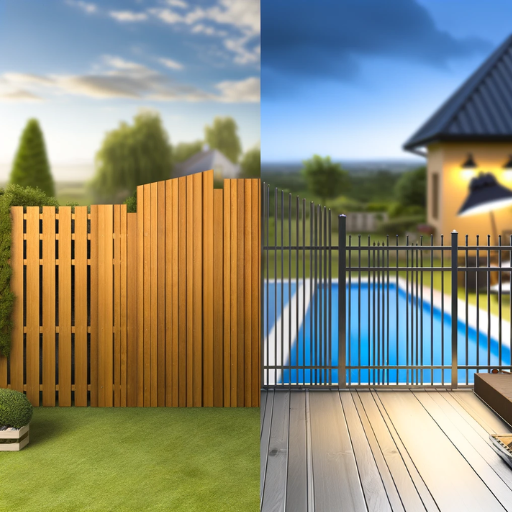
The selection of materials is one of the most crucial things during the construction or renovation process, where it is a must to take into account both the environmental impact of the materials and maintenance requirements. For instance, wood is a renewable and biodegradable product that can be considered more environmentally friendly than non-renewable materials like metal or plastic. Nonetheless, the support of nature can be compromised by sourcing from the wrong forest or by using chemical preservatives. The World Resources Institute’s 2023 report says that responsibly sourced wood materials can have a carbon footprint 50% lower than that of synthetic materials, especially when disposed of in a sorted manner.
Wood, on the contrary, requires continuous maintenance to prevent its life and performance from being shortened. Pre-treatment, paint, and protection from insect attacks like termites, etc are all parts of the maintenance cycle. A 2022 study on home improvements found that in tropical regions, untreated wood fences last approximately 7-10 years, but with proper care, they can last 20 years or more. Meanwhile, vinyl, which is another alternative, demands less maintenance but its overall environmental impact, including the time taken for decomposition, is higher than that of wood.
Sensitivity to the weather further influences material care. Research has demonstrated that untreated wood exposed to constant rain and humidity can become unfit for construction in as little as five years. However, paints and stains that are sensitive to climate considerably extend the life of the wood. Eco-friendly sealants and coatings have become so advanced that they not only allow homeowners to lower the frequency of maintenance but also to lessen the environmental damage in the same space.
Sustainable material selection, correlated with good maintenance, not only keeps up the valuation of the property but also contributes to the overall sustainable global movement aimed at minimizing the negative effects of building materials through the responsible management of their lifecycle.
Sustainability Aspects
Sustainable building materials and practices are vital to reducing environmental impact and encouraging resource efficiency. Using materials like bamboo and reclaimed wood is indeed one of the primary ways to reduce the ecological footprint, as they are renewable and more environmentally friendly than traditional materials such as concrete. Recent studies reveal that the construction sector is responsible for almost 39% of worldwide carbon emissions, with the manufacture of building materials accounting for about 11% of those emissions. Using green innovations such as recycled steel, low-VOC paints, and energy-efficient insulation can greatly benefit homeowners and builders by reducing their ecological footprint.
In addition, water-conserving measures such as rainwater harvesting systems and low-flow plumbing fixtures can provide long-term savings and even protect the environment. For example, an annual saving of around 40% of a household's total water usage can be achieved by installing a rainwater collection system. The installation of solar panels and energy-efficient appliances greatly reduces the household's reliance on nonrenewable energy sources. The International Energy Report significantly helps reduce the years 2019 to 2024, demonstrating how sustainable energy solutions are becoming economically and technologically more viable.
Smart technologies such as programmable thermostats and lighting systems significantly improve sustainability by reducing energy waste. A study indicates that these smart systems can reduce energy consumption in residential buildings by 10-15% annually. In this way, both environmentally friendly and advanced technologies could go hand in hand, making the world a better place by helping the planet meet its climate goals while allowing creators of such technologies to enjoy healthier living conditions.
Maintenance Requirements Over Time
The maintenance of sustainable systems and innovative technologies demands a sophisticated approach that assures their efficiency and performance over the long run. Programmable thermostats and lighting systems are, for the most part, low-maintenance; however, regular software updates are essential to optimize their energy-saving features. In fact, research shows that keeping firmware and applications updated can increase system reliability by as much as 20%, thereby reducing the risk of malfunctions.
As for solar panels, cleaning them to remove dirt and debris is part of their maintenance, as is the occasional inspection to ensure maximum energy production. The U.S. Department of Energy indicates that solar panel efficiency diminishes by about 15-20% after 20-25 years of operation due to aging and environmental factors. Nevertheless, proper maintenance, such as cleaning every 6-12 months and observing the performance metrics, can offset these losses.
The HVAC systems connected to the smart thermostats also need regular maintenance checks. Changing filters every 3-6 months and checking the ducts every 2-3 years are steps to maintain good indoor air quality and keep the heating/cooling system efficient. The Energy Star data states that proper maintenance of HVAC systems can lead to a 5-15% reduction in energy consumption.
In the end, both people and industries should implement maintenance plans based on tightly-knit scheduling for these technologies and materials. This would secure operational efficiency for a longer period, reduce long-term expenses, and contribute to the main aim of living sustainably.
Cost Implications
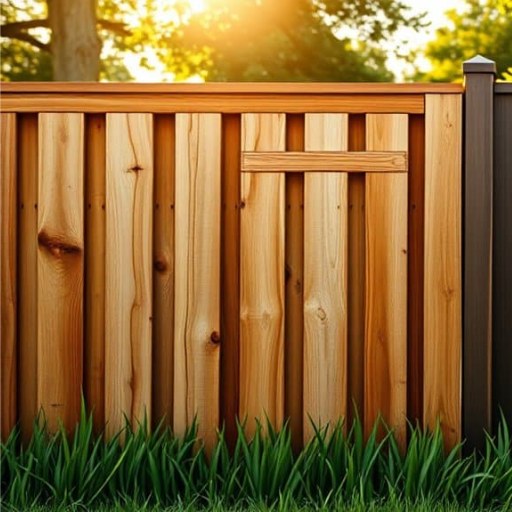
The cost implications of maintaining and upgrading technologies, such as HVAC systems, depend primarily on their size, complexity, and service frequency. It is said that the average annual cost of maintaining HVAC systems ranges from $150 to $500 per system. But if a system is not maintained regularly, it can cause big expenses of more than $1,000 due to inefficiency or the need of costly repairs.
The matter of energy consumption is another aspect that has to be considered, and it will significantly reduce maintenance costs. The U.S. Department of Energy has released a report stating that when HVAC systems are properly maintained, they can reduce electricity use by a significant 20%. For instance, replacing clogged filters every 1-3 months costs approximately $5-$15 per filter, yet this small investment helps avoid surging electricity bills due to increased system workload.
In contrast, commercial systems are more like the company's attention and budget. The spending on HVAC maintenance contracts for large-scale maintenance is in the range of $3,000-$7,000 per year. Nevertheless, companies will continue to benefit from their investment in the long run by operating efficiently and avoiding the costly downtime associated with equipment failure.
Also, the initial costs of new energy-efficient systems can be staggering, but the financial benefits over time are equally great. Installation costs for energy-efficient units can be slashed by up to 30% thanks to federal or state tax credits available to businesses and households.
To sum it up, the costs of regular maintenance, potential repairs, and energy-efficiency upgrades underscore the importance of following a strict maintenance schedule. Proactive spending on these systems not only lowers the risk of failures and their consequences but also encourages the global use of energy that is both sustainable and economical over the years.
Initial Installation Costs
When organising the placement of energy systems, initial costs are determined by several factors. The following is a comprehensive list of the main factors that impact these costs:
Purchasing of Equipment
Main energy systems cost (for instance, solar panels, wind turbines, or HVAC units).
Prices may vary significantly by brand, capacity, and technology, with residential systems costing between $5,000 and $30,000.
Permits and Inspections
Permits needed by the local or state government to ensure the building and environmental codes are followed.
The cost is roughly $500 to $2,000, depending on the site's conditions and the project's complexity.
Labor and Installation Fees
Charges of the contractor or technician for the installation of the system.
Labor expenses usually fall between $2,000 and $10,000, depending on the extent of the work and area.
System Design and Engineering
Preparation of custom design plans for enhancing system efficiency and integration.
These services can incur an extra cost of $1,000 to $5,000.
Additional Infrastructure or Upgrades
Cost for extra items such as wiring, inverters, battery systems, or structural upgrades.
These improvements may require an additional investment of $1,000 to $7,000, depending on the specific needs of the system.
Long-Term Cost Efficiency
A system with initially high installation costs, when chosen for investment, can save the investor a lot in the long run. Below are five factors that lead to long-term cost-effectiveness:
Energy Savings
A well-built system can significantly reduce monthly utility bills, and homeowners typically save between $600 and $2,000 each year, depending on the system's size and energy consumption.
Tax Incentives and Rebates
Energy-efficient systems are often eligible for tax credits and rebates from federal and local governments, and sometimes they can even cover installation costs to the tune of 30%.
Durability and Longevity
Top-notch systems usually come with a 20-30-year warranty, thus guaranteeing long-term savings if maintenance is carried out correctly.
Reduced Maintenance Costs
Induction hobs, for example, require very little annual maintenance, with an average cost of $100 to $300.
Increase in Property Value
The installation of energy-efficient systems can elevate the property’s selling price by about 3-5%, making it a good long-term investment.
Conclusion
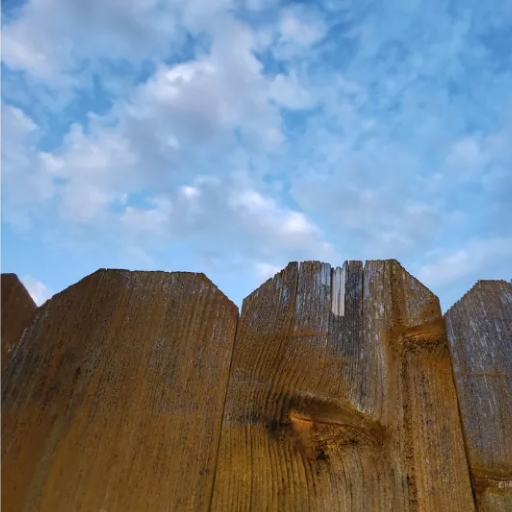
Installing high-quality, energy-efficient systems is a wise decision for long-term benefits, as these benefits are tangible and significant. Not only do these systems reduce energy costs, but they also increase the property's value and require little to no maintenance. They last for 20 to 30 years, making them reliable and sustainable for homeowners who want to benefit both financially and environmentally.
Summary of Findings
Recent data confirms that energy-efficient systems are an appealing option that offers both financial and environmental benefits. The Department of Energy reports that installing energy-efficient HVAC systems could save homeowners up to 30% on annual energy bills. Moreover, research indicates that the increased value of resale properties with energy-efficient upgrades accounts for the above-mentioned average selling prices being about 2.7% higher than those of non-upgraded homes.
Besides that, renewable energy sources like solar panels can help convert regular energy costs into significant savings over the long run. According to the Solar Energy Industries Association, residential solar systems can cut electricity bills down to about $1,500 a year. At the same time, on average, 3-4 tons of carbon emissions are being reduced. The systems are usually self-sufficient in terms of cost in 6-10 years of use, which speaks of their long-term economic use.
And last but not least, these systems are eco-friendly, supporting sustainability goals, and encouraging the faster adoption of cleaner energy solutions through technological improvements. Overall, these findings highlight the significant advantages of installing energy-efficient systems, not only in terms of personal financial benefits but also in environmental impact.
Recommendations for Homeowners Based on Different Needs
If you’re a homeowner looking to reduce energy bills, I’d recommend prioritizing solar panel installations or energy-efficient appliances, as both offer long-term savings. For those focused on sustainability, systems such as heat pumps or innovative energy management tools can significantly reduce your carbon footprint. If upfront costs are a concern, consider starting small with programmable thermostats or LED lighting, which are cost-effective initial steps. Tailoring your approach to your budget and goals will help maximize both financial and environmental benefits.
Frequently Asked Questions (FAQ)
Are metal fences longer-lasting than wood ones?
Indeed, the answer is yes, metal fences are usually longer-lasting than wood ones. A properly maintained wooden fence can last about 15 to 20 years. In contrast, metal options like galvanized steel or aluminum typically last several decades and often require little maintenance to remain in good condition.
What are the best materials for a fence that lasts the longest?
Metal options such as galvanized steel and aluminum, as well as high-quality woods like cedar, are at the top of the list for fence materials with the longest lifespan. Such materials are weather-resistant and not prone to rot or insect infestation, making them ideal for a long-lasting fence project.
Which fence type lasts the longest?
Metal fences, especially wrought iron and galvanized steel, last the longest among various fence types. The durability of these materials, along with their resistance to wear and tear, makes them a cost-effective solution for homeowners looking for long-lasting fencing.
How does regular maintenance influence the life span of a wooden fence?
Regular maintenance is crucial for the lifespan of a wooden fence. If sealing and staining are done correctly, the wood fence will last longer because no rot or insect damage will occur. On the contrary, if the wall gets neglected, it will deteriorate and thus lose its lifespan.
What is the cost difference between wood and metal fences at the start?
In most cases, metal fences cost significantly more than their wooden counterparts. Despite their high initial cost, metal fences are considered more economical in the long term due to their longevity and maintenance-free nature.
Are vinyl fences a viable option compared to wood and metal fences?
Indeed, vinyl fences are a preferable option because they are long-lasting and maintenance-free. They withstand the elements and do not decay; hence, they remain a good-looking, durable material for fencing.
Which factors should I consider when choosing the best fence for my property?
When the decision on the right fence for your home comes, consider the fence materials, desired lifespan, maintenance, aesthetics, and cost. Considering these factors will help you choose the best fence for your needs.
What can I do to make my metal fence last for years?
If you want the metal fence to last for decades, always choose top-notch materials like galvanized steel or aluminum, and schedule inspections to detect rust or damage. Fixing the problem on time will help preserve the fence's strength and lifespan.
Tags: Do metal fences last longer than wood?

